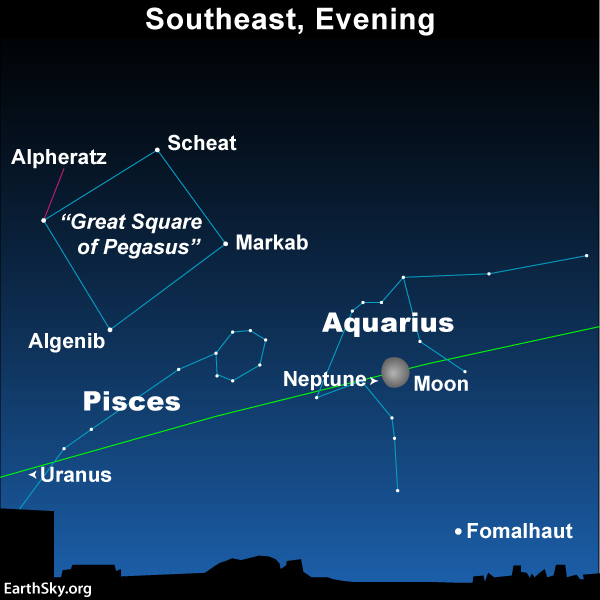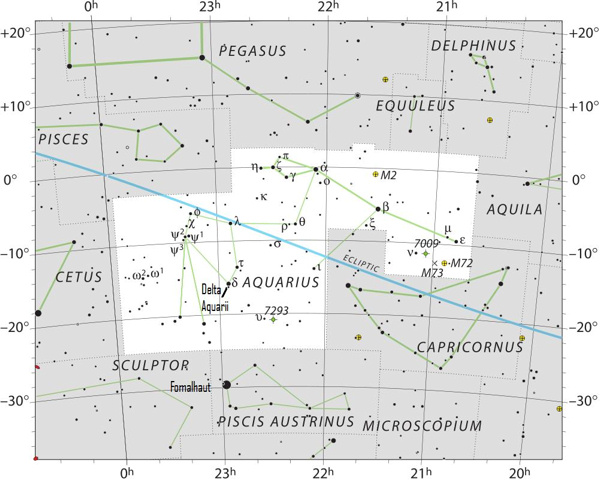Tonight – October 12, 2016 – don’t expect to see the planet Neptune in the glare of the waxing gibbous moon. But you can use the moon on the night of October 12 to get a ballpark idea of where this distant planet resides in front of the backdrop stars. As seen from around the world on October 12, the moon shines in front of the constellations Aquarius and is moving toward the constellation Pisces. Neptune sits quite close to the moon, in front of the constellation Aquarius, while Uranus lies much farther east of tonight’s moon, in front of the constellation Pisces.

Neptune – now considered the most distant major planet from the sun by the International Astronomical Union – requires an optical aid to be seen.
Which background stars can you expect to see in the light of the bright moon? Possibly Fomalhaut, and the four stars in the Great Square of Pegasus.
Fomalhaut resides to the south of tonight’s moon, while the Square of Pegasus lies to the north. From northerly latitudes, that means the Great Square of Pegasus appears high overhead or high in the southern sky on these October evenings, while Fomalhaut shines low in the south.
From temperate latitudes in the Southern Hemisphere, Fomalhaut shines high overhead, whereas the Great Square of Pegasus appears in the northern sky.
If you want to find distant Neptune – assuming you have a telescope to enable you to see it – you’ll need a sky chart even more detailed than the one above. You’ll find a finder chart for Neptune (and Uranus) here.
Then you’ll need to familiarize yourself with the constellation Aquarius. With optical aid, a good sky chart, and lots of patience, you can star-hop to Neptune.

Then all you have to do is wait for a dark, moonless evening to seek out the solar system’s two most distant planet, Neptune.
Still want to find Neptune? Check out this article from SkyandTelescope.com, for the June 2016 to March 2017 observing season.
Bottom line: Tonight’s moon – October 12, 2016 – guides you to the great Square of Pegasus, the star Fomalhaut and the general location of Neptune in the sky. If you can familiarize yourself with this part of the sky, you’ll have better luck spotting Neptune in a moonless sky.












